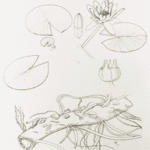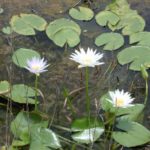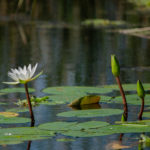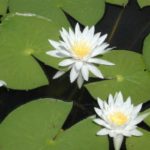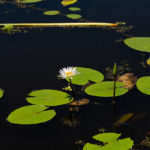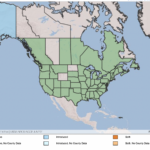Nymphaea odorata
What is American White Water Lily?
Physical Characteristics
Leaves:
- Up to 9.84 inches long
- Green on top
- Slightly green with red or purplish-red on bottom
Flowers:
- Very smelly
- Sepals often purplish on back
- Elliptical or egg-shaped or sword-shaped
- Up to 3.16 inches long
- 1 inch wide
- Usually more than 25 petals
- White petals
Fruit:
- Globe shaped
- 1-1.19 inches in diameter
Seeds:
- 3-D ellipse shape
- About 0.08 inches long
Stem:
- Rhizome stout
- Mostly 1-1.19 inches thick
Where Does it Grow?
White water lily can be found in ponds, lakes, slow streams and ditches.
Pros and Cons of American White Water Lilies
Deer, beaver, muskrat, nutria and other rodents will consume the leaves and rhizomes of white water lily; while the seeds are eaten by ducks. Submerged portions of all aquatic plants provide habitats for many micro and macro invertebrates. These invertebrates in turn are used as food by fish and other wildlife species (e.g. amphibians, reptiles, ducks, etc). After aquatic plants die, their decomposition by bacteria and fungi provides food (called “detritus”) for many aquatic invertebrates.
